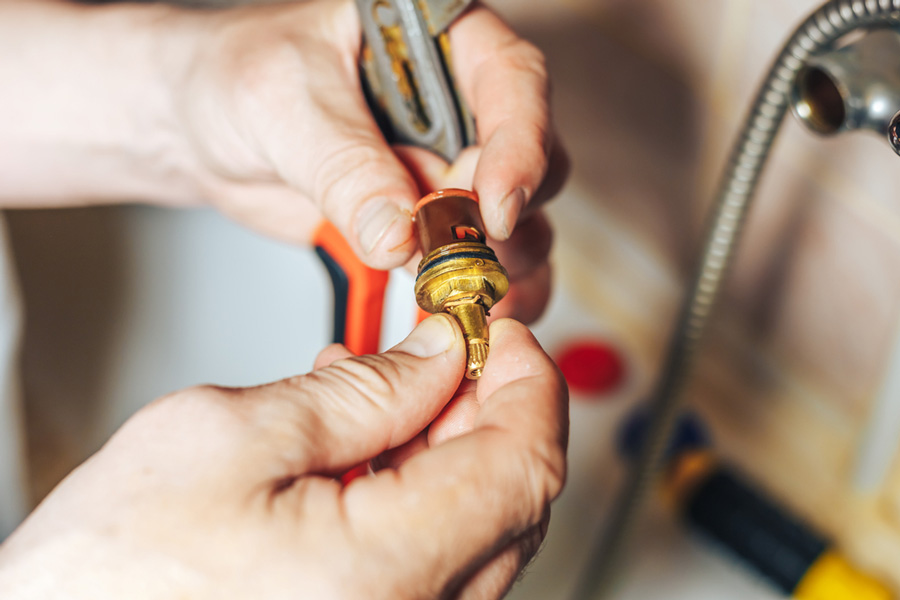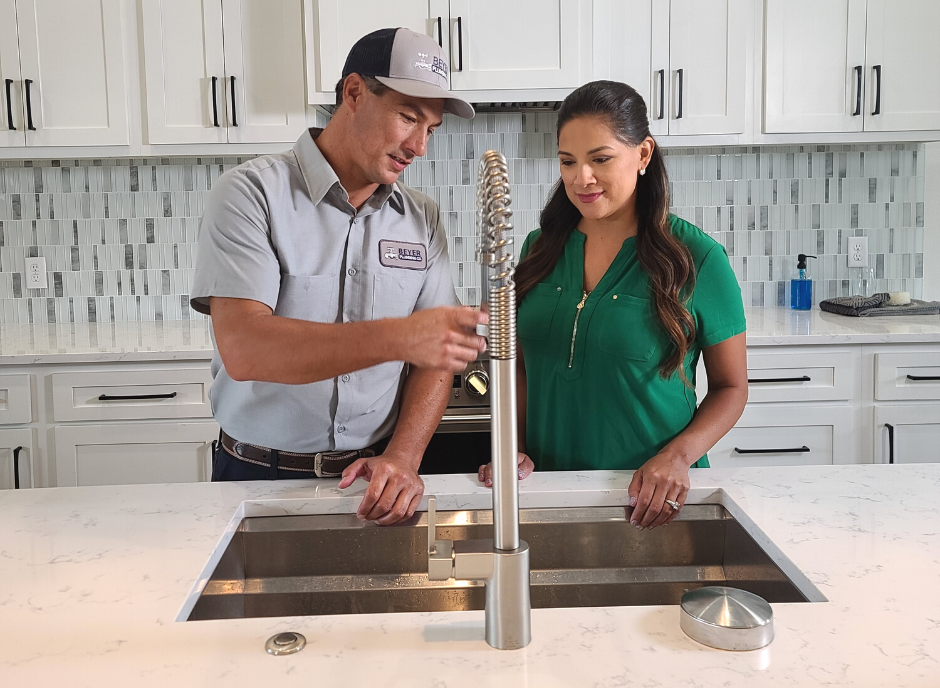What It's Critical to Mend a Faulty Faucet
What It's Critical to Mend a Faulty Faucet
Blog Article
What're your ideas regarding Leaky Faucets: Why They Happen & What to Do About Them?

Trickling faucets could look like a small hassle, yet their impact surpasses just the inconvenience of the sound. From wasting water to sustaining unnecessary monetary prices and health and wellness threats, ignoring a leaking tap can lead to various effects. In this article, we'll delve into why it's crucial to resolve this usual family concern without delay and successfully.
Waste of Water
Environmental Impact
Dripping taps add considerably to water wastage. According to the Environmental Protection Agency (EPA), a single faucet trickling at one drip per secondly can lose greater than 3,000 gallons of water each year. This not just pressures water resources yet likewise influences communities and wildlife depending on them.
Financial Prices
Boosted Water Bills
Beyond the environmental influence, leaking faucets can blow up water bills considerably. The collected wastage in time translates into greater utility expenditures, which might have been stayed clear of with timely repairs.
Prospective Residential Property Damage
Moreover, extended trickling can result in damage to components and surfaces bordering the faucet. Water accumulation can create staining, rust, and also structural issues if left unattended, resulting in additional repair work expenses.
Wellness Concerns
Mold and Mildew Growth
The constant visibility of dampness from a leaking tap creates an ideal setting for mold and mildew development. These fungi not only jeopardize indoor air quality yet additionally present health risks, especially for individuals with respiratory problems or allergies.
Waterborne Conditions
Stagnant water in dripping taps can become a breeding place for bacteria and various other virus, enhancing the threat of waterborne diseases. Impurities such as Legionella bacteria flourish in stationary water, possibly leading to major ailments when consumed or breathed in.
DIY vs. Professional Repair service
Benefits and drawbacks of DIY Repair Service
While some may attempt to fix a dripping tap themselves, do it yourself repair work include their very own collection of obstacles. Without appropriate knowledge and devices, do it yourself efforts can intensify the issue or bring about incomplete repair services, lengthening the problem.
Benefits of Working With a Professional Plumber
Hiring an expert plumber makes sure that the underlying source of the dripping faucet is resolved effectively. Plumbings possess the experience and equipment to detect and fix tap problems effectively, saving time and reducing the risk of further damage.
Step-by-Step Guide to Dealing With a Dripping Faucet
Tools Required
Before attempting to repair a leaking faucet, gather the required tools, consisting of an adjustable wrench, screwdrivers, replacement parts (such as washers or cartridges), and plumber's tape.
Common Tap Issues and Their Solutions
Recognize the kind of faucet and the particular issue creating the drip. Usual issues include worn-out washing machines, rusty valve seats, or faulty O-rings. Describe maker instructions or on-line tutorials for detailed assistance on fixings.
Safety nets
Regular Upkeep Tips
To prevent dripping faucets, perform regular upkeep such as cleaning up aerators, evaluating for leaks, and changing worn-out parts without delay. Furthermore, take into consideration installing water-saving tools or upgrading to much more reliable components.
Importance of Prompt Fixes
Resolving dripping faucets as soon as they're observed protects against further water wastage and prospective damages, eventually conserving both water and cash in the future.
Influence On Building Value
Perception of Well-Maintained Residential Or Commercial Property
Maintaining a residential property in good condition, including dealing with maintenance issues like dripping faucets, enhances its viewed worth and worth among potential purchasers or renters.
Influence on Resale Value
Features with well-maintained plumbing components, consisting of taps, command greater resale worths in the realty market. Resolving trickling taps can add to a favorable impact throughout residential or commercial property evaluations and negotiations.
Environmental Duty
Specific Payment to Conservation
Taking obligation for repairing dripping taps lines up with wider efforts toward water conservation and ecological sustainability. Every individual's activities collectively make a significant influence on protecting valuable sources.
Lasting Living Practices
By prioritizing prompt repairs and adopting water-saving practices, individuals add to lasting living practices that profit both existing and future generations.
Verdict
Attending to a dripping faucet exceeds plain convenience; it's a necessary step towards saving water, lowering monetary costs, and safeguarding health and wellness and residential or commercial property. Whether via do it yourself repairs or professional support, doing something about it to repair trickling taps is a tiny yet impactful means to promote responsible stewardship of sources and add to a healthier, extra sustainable future.
How to Fix a Leaky Faucet: Step-by-Step Repair Guide
A leaky faucet may seem like a simple annoyance, but if it's not fixed promptly, that leak could cost hundreds to potentially thousands. From water damage to mold, mildew, and high water bills, even a tiny leak can be catastrophic if left unattended. Damage like this can even affect the overall value of your home, so it's important to take the right approach for leaky faucet repair. You may need the help of a plumber in some cases, but we've got a few tips you can try on how to fix a leaky faucet before calling the pros.
Four Faucet Types
When you're learning how to fix a leaky faucet, the first step is knowing what kind of faucet you're working with! There are four common types.
Cartridge Faucets
Cartridge faucets come in one- or two-handled varieties. In one-handled cartridge faucets, hot and cold water combines in a single cartridge. In the two-handled versions, hot and cold water are controlled separately and mixed in the faucet.
Ball Faucets
Ball faucets have a single lever you push up and down to adjust the pressure and rotate to change the temperature. A slotted metal ball controls the amount of water allowed into the spout.
Compression Washer Faucets
They're the oldest type of faucet, but they're still used in many homes — especially older ones. Compression faucets have two separate handles that, when turned, raise or lower the washer that seals a water valve. This valve stops water from flowing through the faucet when it is turned off.
Disc Faucets
Disc faucets rarely need to be repaired due to their maintenance-free design. The water flow is controlled by two discs — the upper one raises and lowers against a fixed lower disc, creating a watertight seal. If your disc faucet starts leaking, you may need to replace the seals or clean residue buildup from the inlets.
Fixing a Leaky Faucet
Step 1: Turn Off the Water
Whether you're learning how to fix a leaky bathtub faucet or how to fix a leaky kitchen faucet, always turn off the water supply to your working area when you're fixing a leak. The last thing you want is a flood added to your list of things to fix.
Look for the shutoff valves below your sink or around the tub and turn them clockwise to stop the water flow. If your faucet doesn't have shutoff valves, you may need to turn off the water for the whole house. Check to make sure it's off by turning the faucet on. If nothing comes out, you're ready to start the repair.
Step 2: Take Apart the Faucet
How you disassemble your faucet depends on the type of fixture you have. You can use a flathead screwdriver to remove the caps on top of the handle or handles for cartridge and compression faucets. Inside, you should see handle screws. Unscrew these with a screwdriver to remove the handle.
Disc- and ball-style faucets will typically have an inlet screw near the handle, and removing that will reveal the interior of the faucet.
Detach the Valve Stem
For cartridge- and compression-style faucets, you'll see the inner valve stem or cartridge once you remove the faucet handles. If you have a compression faucet, unscrew the brass valve stem. If you have a cartridge faucet, pull out the cartridge. If your cartridge has been in place for a while, it may require some tools or extra force to remove it due to mineral deposits.
Examine and Replace Parts
Once you've removed the parts, check them out to confirm what needs to be replaced. You may see corroded rubber washers, O-rings, stems, or cartridges. On a ball-style faucet, check the seats and springs for damage.
If you need to repair a leaky disc faucet, check the inlet and seals on the lower disc.
Once you determine what parts must be replaced, visit your local hardware store. Bring the damaged parts with you to ensure you can purchase the correct components to replace them.
Clean Valves and Faucet Cavity
If you've removed a stem or cartridge, you may notice mineral buildup in the faucet's threads. Use white vinegar to clean the valve seat by soaking it for a few minutes, then scrub it away with a soft toothbrush and rinse with warm water. You can also clean the interior of the faucet in the same way.
Reassemble the Faucet
Once your faucet is cleaned and the required parts have been replaced, it's time to reassemble it. Put the pieces back together and slowly turn the water supply back on. Doing this slowly is crucial because too much initial water pressure can damage the new hardware you've just installed.
https://homewarranty.firstam.com/blog/how-to-fix-leaky-faucet

I am just very intrigued by Water Dripping from Faucet: Why and How to Fix and I hope you liked our entry. In case you liked our article please make sure you remember to share it. Thanks for going through it.
Report this page